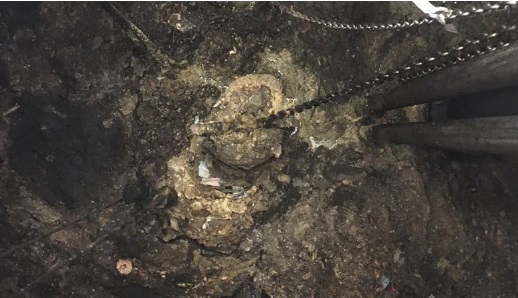Collection System 0.7 MGD
Persistent fats, oils, and grease (FOG) accumulation can deteriorate wastewater collection infrastructures and increase maintenance demands. Lift stations have many moving parts that can breakdown when FOG buildups are too great. Additionally, collection pipes can accumulate greasy residues that prevent wastewater flows. In these events, sanitary sewer overflows can occur.
Removing FOG from collection infrastructures is essential for wastewater management. Lift stations that move wastewater with heavy grease loads require frequent cleanings to stay operational. Additionally, to avoid sanitary sewer overflows, collection pipes are often jetted to remove FOG buildups. The above maintenance precautions are labor intensive and costly for wastewater utility entities.
Bioaugmentation can be used to reduce FOG in collection systems to minimize maintenance requirements. Augmenting lift stations and sewer pipes with cultures of wastewater bacteria that solubilize and degrade FOG can help decrease accumulation.1 The following bioaugmentation case study describes the use of ProBiotic Scrubber® II (PBII) for treating grease in a collection system.

Figure 1. Lift station highly impacted by wastewater FOG loadings. Accumulated grease requires frequent removal and disposal.
The wastewater utility provider for a city of 10,000 residents in Arizona was having issues with FOG accumulation in their collection system. The system averaged 0.7 MGD wastewater flows. Several of the collection lines and main lift station were coated with thick greasy residues that required frequent cleaning.
One sewer line, particularly prone to FOG buildups, was receiving wastewater inputs from a concentrated cluster of restaurant establishments. The pipe required monthly jetting to maintain flow. Additionally, the down-line lift station frequently needed cleaning.
The wastewater managers tried using a citrus based product to dissolve the grease. However, the citrus degreaser did little to remove FOG and caused additional corrosion to the cables and floats in the lift station. The operations management needed an effective solution to reduce the frequency of collection system maintenance.
The municipality decided to implement bioaugmentation methods to manage the persistent grease. They implemented BioLynceus® PBII in the sewer pipe and adjacent lift station receiving the heaviest FOG loadings. PBII contains highly diversified and concentrated cultures of living bacteria selected to solubilize and degrade grease.
Within 2 months of treatment, 80% of the grease that previously collected in the pipe had disappeared. The sewer line no longer required monthly jetted to prevent back flow. Furthermore, the lift station accumulated less and easier to remove FOG. Maintenance of the lift station was minimized, and there was no damage to lift station components from the BioLynceus® product.
Augmenting the collection system with PBII helped reduce FOG accumulation and associated operational challenges.
BioLynceus® ProBiotic Scrubber® II helps degrade FOG in wastewater collection systems.
1 Gerardi, M. (2016). Wastewater Bioaugmentation and Biostimulation. Lancaster, Pennsylvania: DEStech Publications, Inc. Pp. 109, 113.
https://www.amazon.com/Wastewater-Bioaugmentation-Biostimulation-Michael-Gerardi/dp/1932078789



